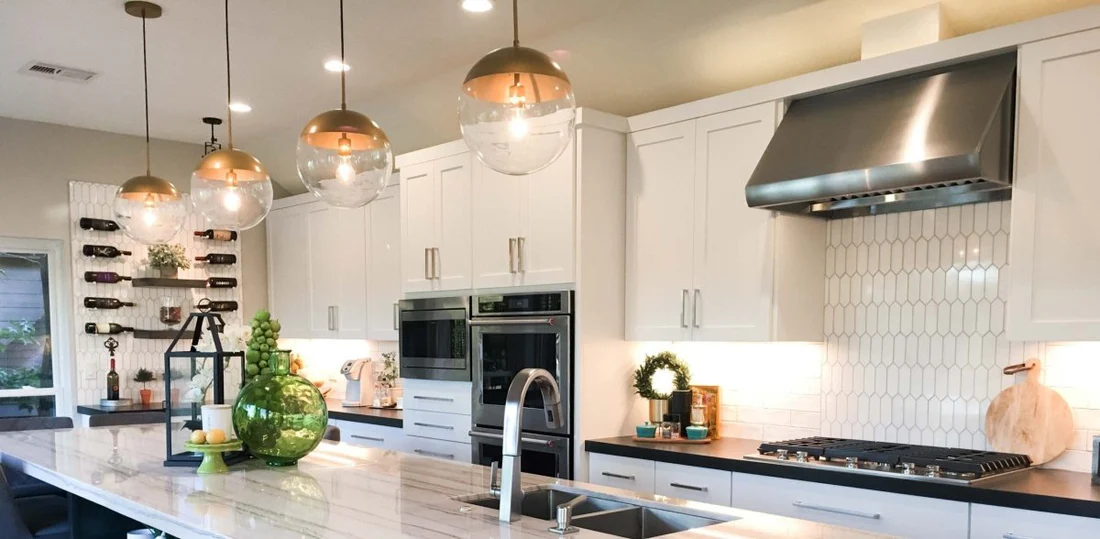The Complete Guide to Commercial Kitchen Hoods?

A commercial kitchen is the heart of any restaurant, and maintaining a clean, safe, and efficient cooking environment is essential. A commercial kitchen hood is one of the most critical components. This article will cover everything you need about commercial kitchen hoods, from their purpose to types, benefits, installation, and maintenance.
What Is a Commercial Kitchen Hood?
A commercial kitchen hood is a ventilation system designed to remove smoke, heat, grease, and cooking odours from a kitchen. It is typically installed above cooking appliances like stoves, grills, and fryers. The primary function of a commercial kitchen hood is to ensure proper airflow in the kitchen, making it a safer, more comfortable environment for chefs and kitchen staff.
Why Is a Commercial Kitchen Hood Important?
Commercial kitchen hoods are vital in maintaining a restaurant’s health, safety, and hygiene. Here are some reasons why having a high-quality commercial kitchen hood is essential:
- Improves Air Quality: Removes contaminants, odours, and airborne particles.
- Reduces Fire Risk: Prevents grease buildup in the kitchen, which can be highly flammable.
- Regulates Temperature: Helps to control heat levels in the kitchen, keeping it comfortable for staff.
- Compliance with Health Codes: Many local health codes require commercial kitchens to have a functional hood system to meet sanitation standards.
Different Types of Commercial Kitchen Hoods
Several commercial kitchen hoods are available, each designed for specific cooking environments. Choosing the right type for your kitchen is essential to ensuring optimal performance.
- Type I Hood
Type I hoods are used in kitchens where greasy or smoke-producing appliances, such as fryers, grills, or charbroilers. These hoods include filters that trap grease, preventing it from building up in the ductwork and reducing fire risk.
- Application: For greasy, heavy-duty cooking.
- Filters: Includes baffle or grease filters.
- Type II Hood
Type II hoods are used in kitchens where appliances like ovens, dishwashers, or steamers do not produce much grease or smoke. These hoods primarily remove heat, moisture, and odours.
- Application: For lighter, non-greasy cooking.
- Filters: Typically include mesh filters to catch light particles.
- Condensate Hood
Condensate hoods are specialized Type II hoods that remove excess moisture from steam-producing appliances. They help keep humidity levels low, prevent mould growth, and maintain air quality.
- Application: For steam-heavy appliances like dishwashers or steamers.
- Purpose: Moisture control.
- Wall-Mounted vs. Island Hoods
Commercial kitchen hoods can also be wall-mounted or island hoods. Wall-mounted hoods are installed against a wall, whereas island hoods are designed for cooking stations in the centre of a kitchen.
Critical Components of a Commercial Kitchen Hood System
A commercial kitchen hood system has multiple parts working together to ensure adequate ventilation. Here are the main components:
- Hood Canopy: The part of the hood that captures fumes, smoke, and heat.
- Filters: Trap grease, smoke, and particulates to keep the kitchen clean and safe.
- Exhaust Fan: Pulls air through the hood and expels it outside.
- Ductwork: Channels the air from the kitchen hood to the outside.
- Make-Up Air System: Replace the air removed by the exhaust fan to maintain the kitchen airflow balance.
How to Choose the Right Commercial Kitchen Hood
Choosing the fitting commercial kitchen hood for your kitchen depends on several factors, such as your cooking type, kitchen layout, and budget. Here are some key considerations:
- Type of Cooking Equipment: Based on your kitchen equipment, determine whether you need a Type I or Type II hood.
- Airflow Requirements: Calculate the airflow capacity required to ensure proper ventilation.
- Energy Efficiency: Look for energy-efficient models to help save on utility costs.
- Size and Shape: Ensure the hood size matches the cooking area it needs to cover.
Installation of a Commercial Kitchen Hood
Installing a commercial kitchen hood requires careful planning and adherence to local building and health codes. Here are some critical steps involved in the installation process:
- Consult with Professionals: Hire licensed contractors familiar with commercial kitchen installations.
- Determine Placement: Ensure the hood is installed directly above the cooking equipment and at the correct height.
- Install Ductwork: Proper ductwork is essential for adequate ventilation.
- Connect Exhaust Fan and Make-Up Air System: Ensure proper balance between exhaust and incoming air.
- Conduct Safety Testing: Once installed, test the system to ensure it meets safety standards.
Maintenance Tips for a Commercial Kitchen Hood
Routine maintenance of a commercial kitchen hood is essential for safety and performance. Here are some maintenance tips to keep your hood running smoothly:
- Clean Filters Regularly: Grease filters should be cleaned weekly to prevent blockages and fire hazards.
- Inspect Ductwork and Exhaust Fan: Regularly check these components to ensure they are free of obstructions.
- Schedule Professional Cleaning: Periodic professional cleaning will remove any built-up grease in hard-to-reach areas.
- Check for Damage: Regularly inspect the hood, ductwork, and filters for any signs of wear or damage.
Compliance and Health Code Regulations
Most local health departments have strict regulations regarding commercial kitchen ventilation. Some general guidelines include:
- Minimum Ventilation Rates: Many codes require a specific ventilation rate based on the cooking type.
- Routine Inspections: Regular inspections may be necessary to ensure compliance.
- Fire Suppression Systems: Some jurisdictions mandate fire suppression systems within the hood to enhance safety.
- Regular Cleaning: Health codes often specify how frequently hoods must be cleaned and maintained.
It’s essential to stay informed about local regulations to avoid fines and ensure a safe kitchen environment.
Benefits of Installing a Commercial Kitchen Hood
Installing a high-quality commercial kitchen hood brings several benefits:
- Enhanced Safety: Reduces fire risks and maintains a safe kitchen environment.
- Improved Air Quality: This keeps the kitchen free from smoke, odours, and airborne particles.
- Increased Comfort: Helps regulate kitchen temperature and reduce heat, making the kitchen more comfortable for staff.
- Compliance with Health Standards: Ensures your kitchen meets health and safety standards.
- Long-Term Cost Savings: Regular maintenance and proper ventilation can extend the lifespan of your kitchen equipment.
Common Mistakes to Avoid When Choosing a Commercial Kitchen Hood
When selecting a commercial kitchen hood, avoid these common mistakes:
- Undersizing the Hood: A hood that’s too small won’t capture all the fumes and smoke, leading to poor air quality.
- Neglecting Regular Cleaning: Failing to clean the hood and filters regularly can result in grease buildup and fire hazards.
- Choosing the Wrong Type of Hood: Ensure that the hood you choose matches the type of cooking equipment in your kitchen.
- Improper Installation: Incorrect installation can compromise ventilation and safety.
Future Trends in Commercial Kitchen Hoods
The commercial kitchen hood industry is evolving with new technologies focused on efficiency and sustainability:
- Bright Hoods: These are equipped with sensors to monitor air quality and adjust airflow automatically.
- Energy-Efficient Designs: Newer models are designed to consume less energy, reducing utility costs.
- Built-In Fire Suppression: More hoods now come with integrated fire suppression systems.
- Eco-Friendly Materials: Manufacturers are moving towards sustainable materials for hood construction.
Conclusion: The Essential Role of a Commercial Kitchen Hood
A commercial kitchen hood is crucial for any restaurant or commercial kitchen. Maintaining a safe, clean, and comfortable working environment is vital. Kitchen owners can protect their staff, improve air quality, and reduce fire risks by choosing the right hood type, performing regular maintenance, and staying compliant with health codes. Investing in a reliable commercial kitchen hood not only enhances safety but also contributes to the overall efficiency and sustainability of the kitchen.



